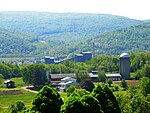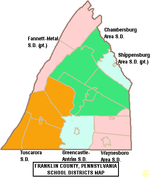Laurel Run mine fire
1915 fires in the United States1915 in Pennsylvania1915 mining disastersCoal mining disasters in PennsylvaniaDisasters in Pennsylvania ... and 2 more
History of Luzerne County, PennsylvaniaPersistent natural fires

The Laurel Run mine fire is an underground mine fire near the communities of Laurel Run and Georgetown, in Luzerne County, Pennsylvania, in the United States. The fire started burning in 1915 at the Red Ash Coal Mine. Attempts to control it lasted from 1915 to 1957 and recommenced in 1966. In the 1960s, the United States government and the Pennsylvania state government became involved in containing the fire. Attempts at stopping the spread of the fire were erroneously declared successful in 1973, and the fire is still burning.
Excerpt from the Wikipedia article Laurel Run mine fire (License: CC BY-SA 3.0, Authors, Images).Laurel Run mine fire
Laurel Run Trailer Park Road,
Geographical coordinates (GPS) Address Nearby Places Show on map
Geographical coordinates (GPS)
| Latitude | Longitude |
|---|---|
| N 41.223888888889 ° | E -75.857777777778 ° |
Address
Laurel Run Trailer Park Road
Laurel Run Trailer Park Road
18702
Pennsylvania, United States
Open on Google Maps









